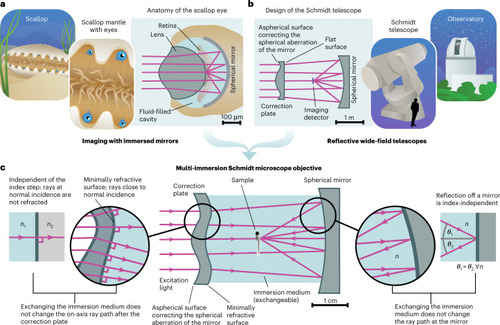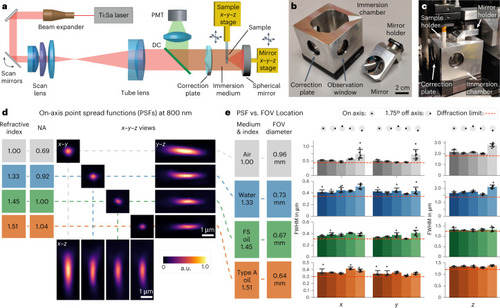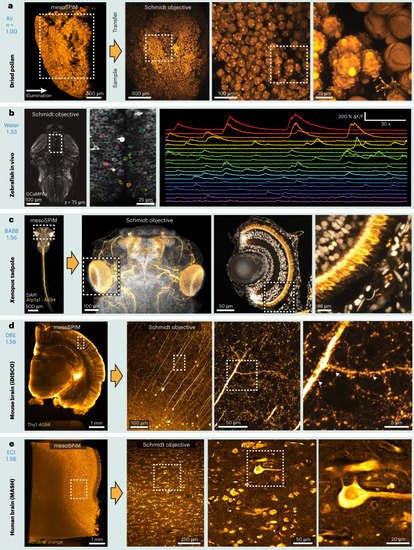- Title
-
Reflective multi-immersion microscope objectives inspired by the Schmidt telescope
- Authors
- Voigt, F.F., Reuss, A.M., Naert, T., Hildebrand, S., Schaettin, M., Hotz, A.L., Whitehead, L., Bahl, A., Neuhauss, S.C.F., Roebroeck, A., Stoeckli, E.T., Lienkamp, S.S., Aguzzi, A., Helmchen, F.
- Source
- Full text @ Nat Biotechnol.
|
Concept of the multi-immersion Schmidt objective. |
|
Setup and characterization. |
|
Example two-photon datasets acquired with the Schmidt objective. Fixed samples were first imaged with a mesoSPIM light-sheet microscope before the sample was transferred to the Schmidt objective. |



